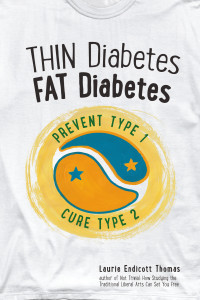The Big Picture, Avoiding Death Approach to Treating Type II Diabetes
A recent blog from Dr. Greger is a good reminder about the importance of looking at the “big picture” when adopting a diet to treat type II diabetes. Type II diabetics would be better served by focusing more on preventing the awful complications of diabetes (ie heart attacks, strokes, kidney disease, blindness, amputations, etc.) rather than focusing on biomarkers alone. (ie. glucose, A1c and even bodyweight)
It turns out that most combinations of drugs and diet do not reduce mortality in type II diabetic patients even when blood glucose and body weight are lowered and controlled. How many type II diabetics know about this? Below is Dr. Greger’s blog. Share it with anyone you know who has type II diabetes and who is not following a whole food plant based (WFPB) diet. This may be the impetus to get them to switch to a diet that can actually protect their cardiovascular other metabolic systems.
Dr. Greger’s blog – Why Drugs and Diet Can Sometimes Fail in Diabetes
“People with type 2 diabetes are at elevated risk for a number of serious health problems, including cardiovascular disease, premature death, blindness, kidney failure, amputations, fractures, frailty, depression, and cognitive decline.” In other words, the higher people’s chronic blood sugars are, the more heart attacks and strokes they have, the shorter their lifespans, and the higher their risk of complications such as blindness and kidney failure, which I discuss this in my video When Drugs and Diets Don’t Lower Diabetes Deaths.
A study was designed in which 10,000 diabetics were randomized into an intensive blood sugar-lowering intervention, where they put people on one, two, three, four, or five different classes of drugs, with or without insulin, to drive blood sugars into the normal range. Of course, this is not treating the underlying cause—that is, the actual disease—but by lowering one of the effects of the disease by any means necessary, these high blood sugars, the hope was to prevent some of the devastating complications. How did they do?
The intensive blood sugar lowering with drugs INCREASED mortality. After reviewing mortality trends, they concluded that the harm associated with the increased risk of death outweighed any potential benefits, and they stopped the study prematurely for safety reasons. They were successful in bringing down people’s blood sugar, but in trying to push people’s hemoglobin A1c under six, they ended up pushing people six feet under. They speculated that this may have been due to the adverse effects of the very drugs used to treat the disease.
Even just injected insulin itself may promote cancer, obesity, and atherosclerosis, worsen diabetic eye disease, and accelerate aging. Insulin therapy may promote inflammation in the lining of our arteries, which may help explain the results of that drug trial and other trials like it that showed the same thing: no reduction in so-called “macrovascular” complications—heart attacks and strokes—with intensive blood sugar lowering. However, intensive therapy was associated with a 21 percent reduction in the development of microvascular complications like kidney dysfunction.
Any such benefits should be weighed against the increased risk of dying, increased weight gain, and increased risk of severe hypoglycemia in intensively treated patients. So, trying to normalize people’s blood sugar with medications alone may not be the best idea. “It also should be noted that these trials relied virtually exclusively on [drugs] and did not include any serious effort at [diet and other] lifestyle change…”.
A study published in the New England Journal of Medicine found that an intensive lifestyle intervention focusing on weight loss did not reduce the rate of cardiovascular events such as heart attacks in overweight or obese adults with type 2 diabetes. It did not increase their risk of death, but it didn’t seem to decrease it either. In fact, the trial was stopped after about 10 years on the basis of futility—participants lost weight, but they weren’t dying any less. That’s what we see across the board with these types of lifestyle interventions. It’s good that the dietary intervention wasn’t killing anyone, but why wasn’t it actually helping people live longer?
Because they didn’t actually put them on a healthier diet.
They just put them on a smaller diet––a calorie-restricted diet––meaning essentially the same lousy diet, but just in smaller portions. If we eat less and exercise more, we can lose weight, get more physically fit, get slimmer, and have better blood sugar control, but if our diets continue to be so un-heart-healthy that our bad LDL cholesterol doesn’t improve, we’re not going to be unclogging our arteries. Whereas individuals following healthier diets may experience not only improved reductions in blood sugar and body weight, but cardiovascular risk as well. Yes, by eating a smaller quantity of food, without changing quality, we can lose weight, but the point of a lifestyle intervention is not to just fit people into skinnier caskets.
Stay Healthy and Strong!






 E Excerpt from Laurie Endicott Thomas’s amazing book Thin Diabetes – Fat Diabetes by clicking here!
E Excerpt from Laurie Endicott Thomas’s amazing book Thin Diabetes – Fat Diabetes by clicking here!
Speak Your Mind